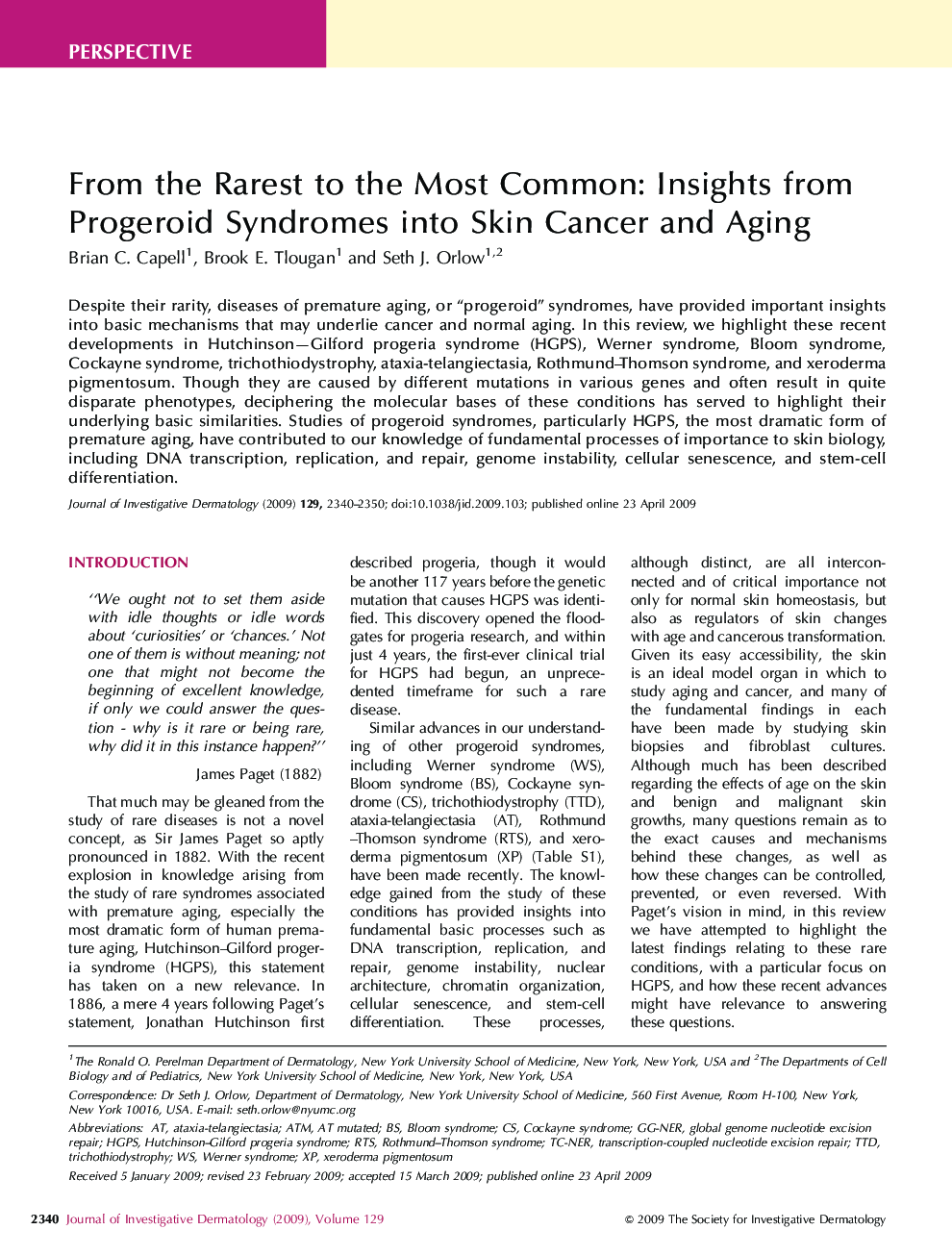| کد مقاله | کد نشریه | سال انتشار | مقاله انگلیسی | نسخه تمام متن |
|---|---|---|---|---|
| 3216295 | 1203563 | 2009 | 11 صفحه PDF | دانلود رایگان |

Despite their rarity, diseases of premature aging, or “progeroid” syndromes, have provided important insights into basic mechanisms that may underlie cancer and normal aging. In this review, we highlight these recent developments in Hutchinson—Gilford progeria syndrome (HGPS), Werner syndrome, Bloom syndrome, Cockayne syndrome, trichothiodystrophy, ataxia-telangiectasia, Rothmund–Thomson syndrome, and xeroderma pigmentosum. Though they are caused by different mutations in various genes and often result in quite disparate phenotypes, deciphering the molecular bases of these conditions has served to highlight their underlying basic similarities. Studies of progeroid syndromes, particularly HGPS, the most dramatic form of premature aging, have contributed to our knowledge of fundamental processes of importance to skin biology, including DNA transcription, replication, and repair, genome instability, cellular senescence, and stem-cell differentiation.
Journal: Journal of Investigative Dermatology - Volume 129, Issue 10, October 2009, Pages 2340–2350